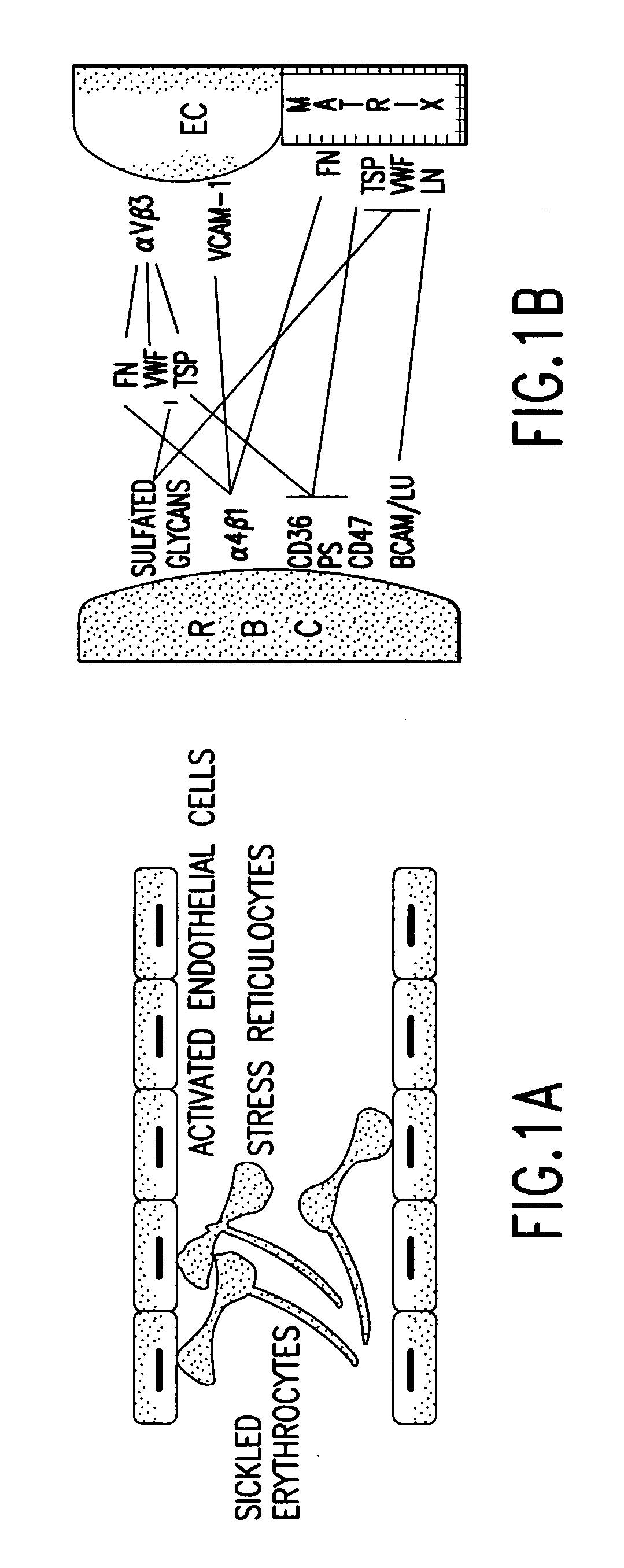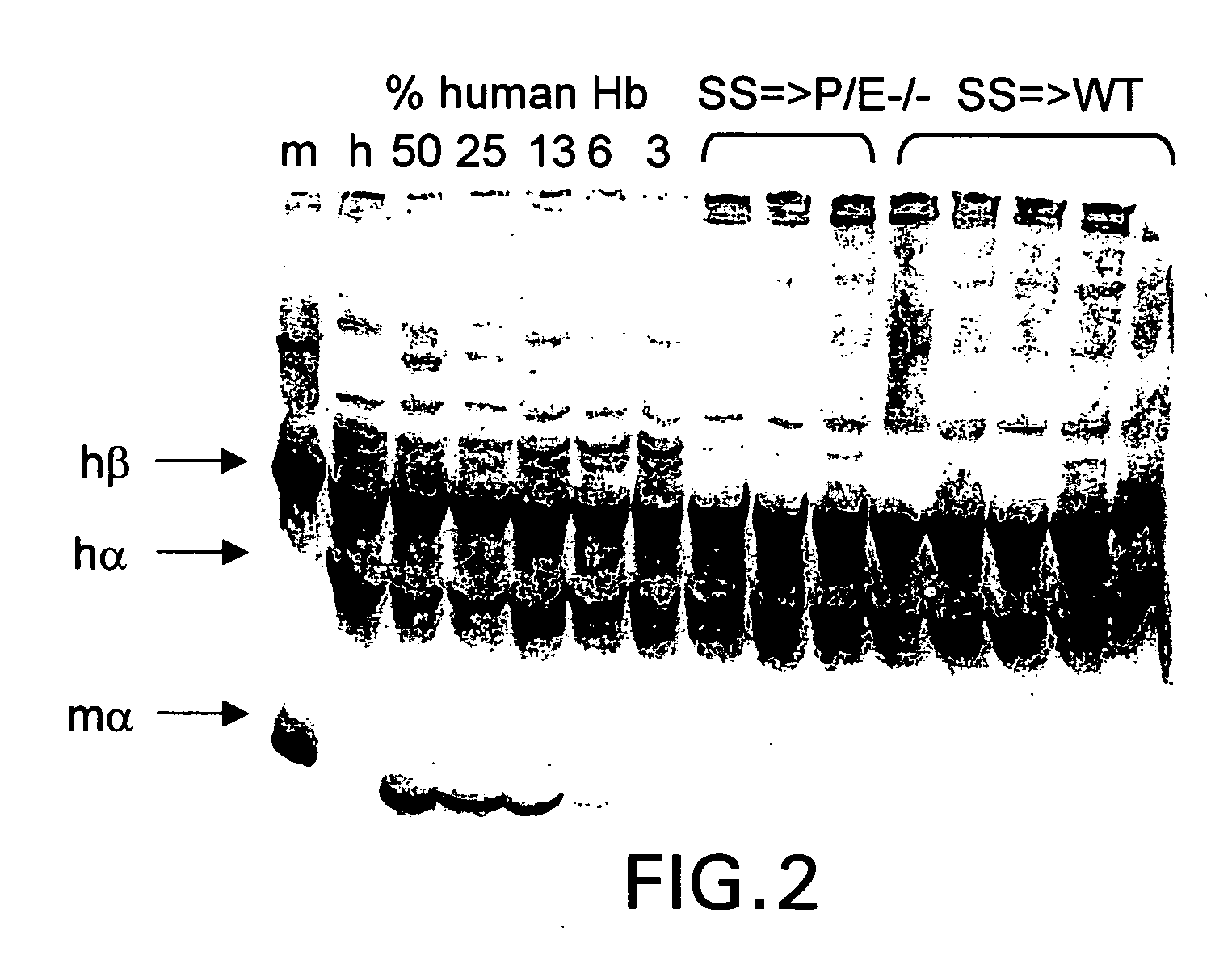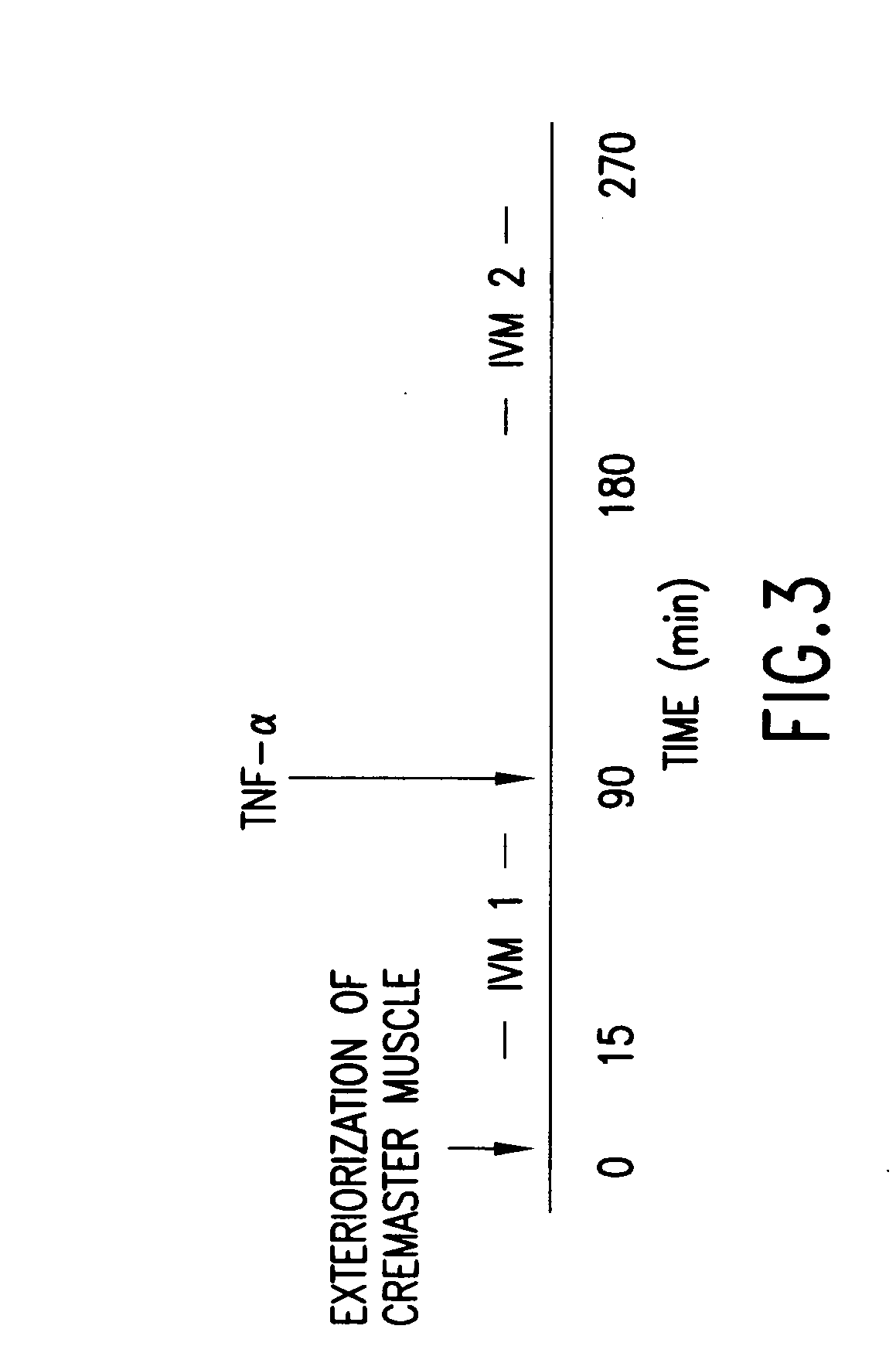Methods of treating sickle cell disease
a sickle cell disease and cell technology, applied in the field of sickle cell disease treatment methods, can solve the problems of increasing rbc rigidity, exacerbate vascular occlusion, morbidity and mortality of sickle cell disease patients, and many are controversial or still poorly defined, so as to reduce ss-rbc/leukocyte adherence
- Summary
- Abstract
- Description
- Claims
- Application Information
AI Technical Summary
Benefits of technology
Problems solved by technology
Method used
Image
Examples
example
P- and E-Selection Deficiency Protects Against TNF-α Induced Vascular Occlusion in Sickle Mice: Evidence for a Critical Role for Adherent Leukocytes
[0050] To further evaluate the role of adherent leukocytes in sickle cell disease, bone marrow from mice exclusively expressing sickle cell hemoglobin (“SS”;[Tg(Hu-miniLCRα1GγSγδβS)mα− / −β− / −]) was transplanted into mice lacking both P- and E-selectins (P / E− / −). P / E− / − mice have severe defects in leukocyte rolling and adhesion in inflamed venules. Experimental data (FIGS. 7A-B) indicates that the amount of leukocyte rolling and adhesion and the blood flow was preserved even after TNF-α stimulation (shear rates: 604±57, n=29) (FIGS. 8A-B). The interactions per adherent leukocyte were not, however, altered.
[0051] Consistent with reduced numbers of adherent leukocytes in SS-P / E − / − mice, the total number of erythrocyte / leukocyte interactions was significantly reduced in P / E− / − mice harboring SS-RBCs (0.4±0.3 / min / 100 μm; n=23 in 3 mice; p=0...
PUM
| Property | Measurement | Unit |
|---|---|---|
| length | aaaaa | aaaaa |
| length | aaaaa | aaaaa |
| affinity | aaaaa | aaaaa |
Abstract
Description
Claims
Application Information
 Login to View More
Login to View More - R&D
- Intellectual Property
- Life Sciences
- Materials
- Tech Scout
- Unparalleled Data Quality
- Higher Quality Content
- 60% Fewer Hallucinations
Browse by: Latest US Patents, China's latest patents, Technical Efficacy Thesaurus, Application Domain, Technology Topic, Popular Technical Reports.
© 2025 PatSnap. All rights reserved.Legal|Privacy policy|Modern Slavery Act Transparency Statement|Sitemap|About US| Contact US: help@patsnap.com



